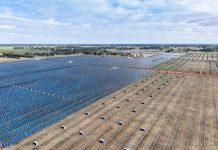
Transgrid has finalised its system strength plan for New South Wales, setting out a portfolio of solutions designed to maintain grid stability as the state transitions away from coal-fired power generation.
After a three-year process involving the assessment of more than 100 possible solutions, Transgrid has published its Project Assessment Conclusions Report (PACR), marking the final step in a regulatory process to determine the most cost-effective and technically sound approach to ensuring grid stability.
Transgrid Acting Executive General Manager of Network Jason Krstanoski said the plan is critical as the state moves away from traditional coal-based power generation.
“The NSW grid has traditionally relied upon coal generators to provide system strength as a byproduct of their typical operation,” Mr Krstanoski said. “There is now an urgent need to maintain this heartbeat, as we accelerate the transition to wind and solar and as 80% of the coal capacity in NSW retires in the next decade.”
System strength refers to the capability of the electricity grid to maintain stability and withstand disturbances. Transgrid’s proposed solution combines both traditional and emerging technologies to provide the ‘heartbeat’ needed for a renewable-powered future.
The preferred portfolio includes ten synchronous condensers on Transgrid’s backbone network, five gigawatts of grid-forming batteries, and modifications to 650 megawatts of synchronous generators to enable them to operate in condenser mode.
It also outlines the continued operation of synchronous generators where required, and additional targeted support for renewable projects in key Renewable Energy Zones.
“Our preferred portfolio utilises innovative grid-forming batteries to provide almost half of NSW’s system strength requirements, with synchronous condensers providing the other half,” Mr Krstanoski said.
Transgrid said it expects the plan to unlock constrained renewable generation and enable the safe operation of the grid during periods of high renewable output. The strategy is forecast to deliver $8.8 billion in net market benefits by improving system reliability and supporting more affordable, clean energy.
“The report also demonstrates that additional net market benefits of $1.2 billion could be delivered if Transgrid accelerates deployment of synchronous condensers, so we are currently investigating options to fast-track the project,” Krstanoski added.
The initiative forms part of Transgrid’s broader System Security Roadmap, a 10-year plan to facilitate secure grid operation at up to 100 per cent instantaneous renewable penetration.


















